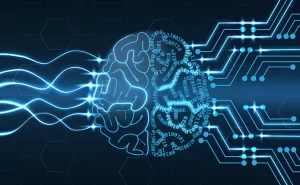
AWS has added large language models from StabilityAI and Anthropic to its Amazon Bedrock service.
Amazon Web Services customers will soon be able to choose from a list of foundational large language models, through the cloud service provider’s Bedrock service.
Amazon Bedrock is the company’s generative AI tool, which organizations can use to build and scale generative AI applications. It allows organizations to privately customize foundational models to fit specific use cases, alongside utilizing other AWS tools to stabilize, secure, and scale applications for private or public use.
SEE ALSO: Nearly Every Job Will be Touched by Generative AI
In the latest update, Amazon has added two foundational models from Anthropic and Stability AI. Organizations can now choose to work with Anthropic’s Claude 2, which is a conversational AI tool similar to ChatGPT. In comparison to its predecessor Claude 1.3, the newest version can intake a lot more text, up to 200 pages worth or 100,000 tokens, and be able to provide generative text. It was launched in July 2022 but has only recently been exposed to public viewing.
The other new foundational model is Stability AI’s Stable Diffusion XL 1.0, which is the company’s open-source text-to-image generative model. AWS sees customers being able to input Stable Diffusions model for films, television, and instructional videos.
In addition to the two new models added, AWS customers can also access Amazon’s own model Titan, which can be used for text summarization, text generation, personalized recommendations, and search accuracy. Other third-party models available include Tel Aviv’s AI21 Labs and Stability AI’s StableLM, which it claims has over seven billion parameters.
By opening up the floor for customers to try out multiple large language models, AWS has positioned itself as an impartial cloud service provider. This may be because the cloud giant has fallen a bit behind the two other platforms, which in Google have decades of AI-expertise and in Microsoft have the leading-edge research lab in OpenAI.
“Nobody knows if the winning technologies have even been invented yet or if the winning companies have even been formed yet, so what customers need is choice,” said Adam Selipsky, head of Amazon Web Services, in an interview with the FT. “They need to be able to experiment. There will not be one model to rule them all. A central element of our approach is choice for customers. Amazon is building its own models but we don’t think that’s the only answer for our customers. We’re very committed to providing choice. So we’re also providing access to Anthropic’s models.”
Anthropic and Stability AI are both seeing a lot of interest from investors and service providers as OpenAI draws in millions of people to artificial intelligence. For organizations, the question is whether these services can actually be remodeled to fit specific use cases, and if most organizations have the technical capabilities to do the remodeling.
AWS has seen to it that some of the most popular use cases for generative AI have simplified set-ups, such as fully managed virtual agents. Alongside the new foundational models, AWS has added Agents for Bedrock, which lets developers create virtual agents through a built-in wizard.
It has also launched a new generative AI service, called HealthScribe, which can summarize clinical annotations and create easily digestible reports for electronic health systems. This should allow healthcare software teams to build generative AI systems without the need for their own large language models. The service is currently available as a preview, AWS did not say when it plans to make it generally available.





























